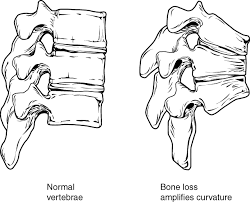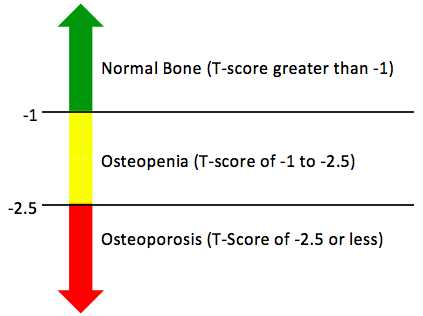Joseph R. Anticaglia MD
Medical Advisory Board
Lisa, a 73year old retired school teacher, went to a pastry shop to purchase a regular coffee and a plain donut. Before ordering, she turned around to pick up a few napkins. She slipped, fell, and landed on her buttocks.
After the commotion subsided, she calmed the nerves of the owners, and walked two blocks to keep her 11 a. m. hair appointment. She felt fine the rest of the day. Two aspirin were enough to handle the moderate back pain.
That night there was a 180 degree change in her condition. She suffered excruciating pain in the lower back. The was so intense she couldn’t sleep, couldn’t turn over in bed without crying-out, unable to get out of bed by herself, or walk to the bathroom without assistance.
Her internist prescribed medication for the back pain, ordered a CT of the lower back as well as a bone density test. She borrowed a neighbor’s wheelchair to help her get to the hospital. The radiologist’s report described a compression fracture of L1 and findings consistent with osteoporosis.
Osteoporosis
Osteoporosis is a bone disease that over time silently eats away at the vitality and strength of your bones. Throughout our lives, bones have an innate ability to replace old, broken-down bone with new, healthy bone. Osteoblasts are the cells that form new bone.
Osteoclasts are cells that are involved with the breakdown and resorption of bone. Normally, there is a dynamic balance between new bone formation and bone removal.
Osteoporosis occurs when the body loses too much bone (calcium and other minerals). As a result, the outside of the bones become eggshell thin, weak, fragile and may break after a fall, or in serious cases, sneezing can result in a broken bone.
Osteoporosis is common , serious, and costly. The National Osteoporosis Foundation says, “millions of Americans have osteoporosis and low bone mass, placing them at an increased risk for osteoporosis. Studies suggest that approximately one in two women and up to one in four men aged 50 and older will break a bone due to osteoporosis. Osteoporosis is responsible for two million broken bones and $19 billion in related costs every year.”

Osteoporosis of Spine
Diagnosis
Osteoporosis is sometimes called a “silent disease” because people have no pain or warning signs with this condition. Often the diagnosis is incidentally made upon x-ray examination after a person has fallen and fractured a bone.
You can find out if you have osteoporosis by getting a bone mineral density test (BMD) and knowing your T score. Doctors use special x-ray techniques to visualize bone structure, bone density and analyze the amount of calcium and other minerals in the bone ((also called bone densitometry or DXA)
As noted in a previous post, “your T-score compares your bone density to that of a young healthy adult of your sex. It’s the number of units (standard deviation) that your bone density is above or below the average (mean). T-score is a valuable tool in the diagnosis of osteoporosis.
T-score

Your bone density is considered normal if the T -score is −1 or above. A score between −1 and −2-5 is a sign of osteopenia. In this instance, the bone density is below normal and may progress to osteoporosis. A score of −2.5 and below indicates you likely have osteoporosis.”
Osteopenia is a milder form of a bone disease that weakens the strength of bones. It’s a yellow flag warning people to treat this problem seriously to minimize the chances of breaking a bone within the next ten years.
Other aspects that help in the diagnosis of osteoporosis include personal and family history, medical examination, physical examination, blood, and urine tests. In addition, the FRAX score estimates your risk of a fracture within the next 10 years by combining your bone density test with other factors. It also helps doctors determine treatment options.
Management of Osteoporosis
The goal of prescribing osteoporosis medications is to build new bone mass and prevent the excessive loss of bone calcium and other minerals. There are several factors to consider in selecting the right medication for you.
Consider—
Your Age:
Some medications work better for younger women while other medications work better for older women,
Your Sex
Some medicines are approved for women only, while others are approved for men and women
Bone Loss
The degree of bone loss influences treatment choices. Patients with osteopenia may not need any treatment compared to those with osteoporosis, and severe bone loss
Medical History
If you have had blood clots or breast cancer, you should not take estrogen. Long term use of steroids can lead to bone loss, osteoporosis, and broken bones.
Preference
Do you prefer medication that is given by pill, liquid, or injection?
Non-Pharmaceutical Treatment
There is no single “silver bullet” prescription for osteoporosis. Treatment requires a multifaceted approach that includes:
- Proper nutrition
- Lifestyle changes
- Exercises
- Fall prevention
- Emotional support
- Medications
- Emotional support
Nutrition
Strive for a healthy diet. It is crucial to incorporate enough calcium and vitamin D into your daily diet
Non-pharmaceutical recommendations include lifestyle changes (stop smoking, healthy diet), and ways to prevent falling (remove loose rugs from your home, wear shoes with a good grip, use a cane or walker, use rubber mat in bath or shower).
Doctors encourage people to exercise to build muscle strength, flexibility and improve coordination and balance. People who fell and broke a bone in the spine, hip or in another part of the body, often need emotional support to navigate through several painful, challenging months.
Pharmaceutical Treatment — Medications
Avoid medications, when feasible , that cause dizziness, confusion, or orthostatic hypotension.
Bisphosphonates are often the first choice selected by doctors to treat osteoporosis. These drugs stop the body from re-absorbing bone tissue. Alendronate (Fosamax), a weekly pill, is a commonly used drug in this category. Some of these drugs are recommended only for women while the others can be used by both men and women.
Denosumab, for example, Prolia, is an injection medication given under the skin every six months to treat osteoporosis in post-menopausal women who are at high risk for fracture. or in women who did not find another osteoporosis medication useful. Denosumab stops bone-reabsorbing cells (bone- removing cells) so they do not damage the bone
Hormone Therapy
Estrogen therapy prevents bone loss and reduces the risk of fracture in the hip and spine. Such therapy, however, can increase the risk of breast cancer and blood clots which can lead to strokes. Raloxifene (Evista) duplicates some of estrogen’s beneficial effects with less side effects of estrogen.
In men, lower levels of testosterone have been associated with osteoporosis; but osteoporosis medication alone or in conjunction with testosterone are recommended.
Bone-building medications that mimic the actions of the parathyroid hormone have been used to build bone mass. Some of the limitations of these drugs are that they are given by injections and can only be used or one or two years. All medications have side effects and it is our job to know as much as we can about them.
Osteoporosis affects millions of Americans and is the most common metabolic bone disease in the United States. It saps the life out of bones making them weak and brittle causing hundreds of thousands of fractures every year, especially among the elderly.
There are steps you can take to fight this disease and the earlier you start the better the results. Work with your doctor about treatment choices.
References
- Paul A Fitzgerald, MD; Osteoporosis, Current Diagnosis and Treatment, 2018
- NIH; Bone Health for Life: Health Information Basics for You and Your Family; NIH, April 2018
- Osteoporosis ; OSAH; Office on Woman’s Health; U. S. Dept. OF Health and Human services, May 20,2019
- NIH; Osteoporosis Overview; October 2019
- Ben Godwin; Osteopenia, Osteoporosis and Exercise; Strong and Stable,
- Joseph R. Anticaglia MD; Osteoporosis: What to Know … What to Do; Doctor’s Column HC Smart, January 5, 2019
Glossary
FRAX score stands for Fracture Risk Assessment Tool. It uses the T-score and other factors to predict the risk of fractures in the arm, hip or spine in the next 10 years in a person with osteoporosis. It can help in the management of osteoporosis. A high FRAX score means the individual could benefit from medical treatment of this diseases besides making lifestyle changes.
This article is intended solely as a learning experience. Please consult your physician for diagnostic and treatment options.

